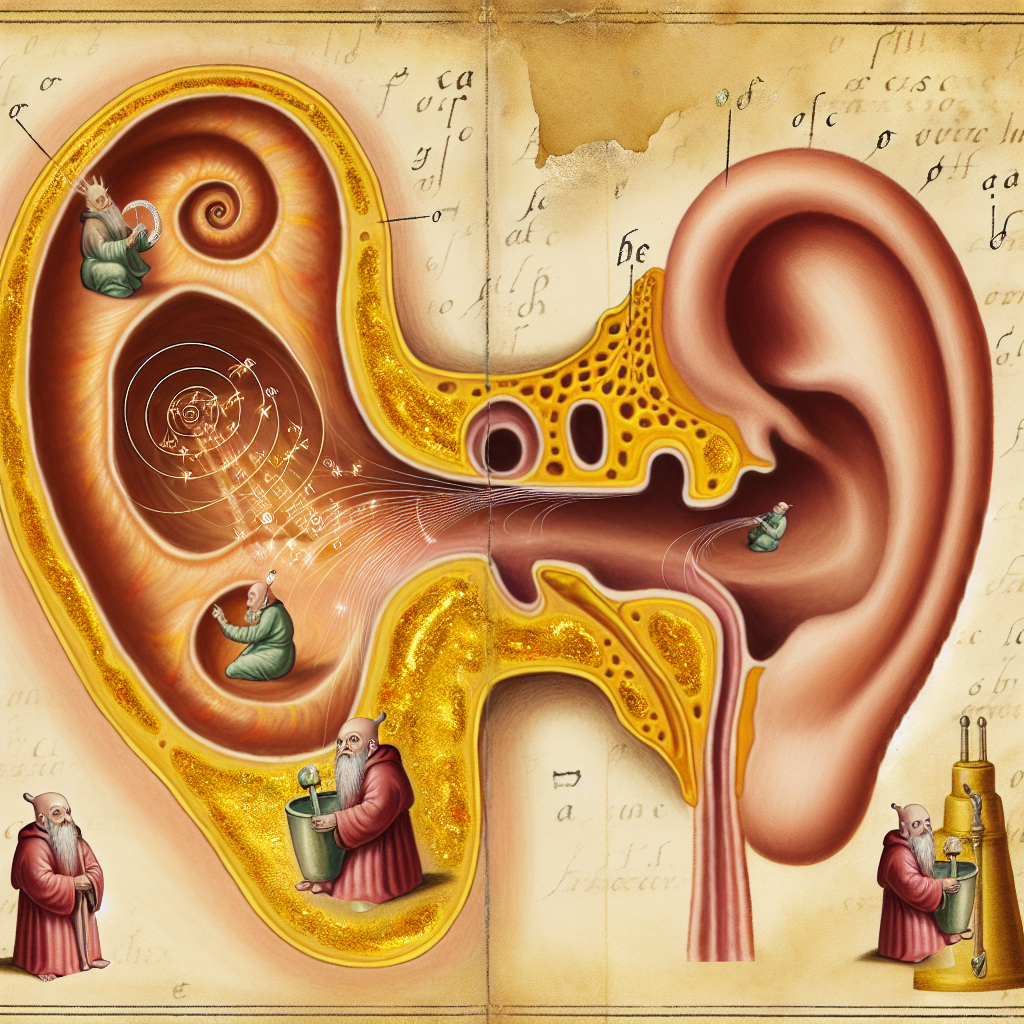Auricular Demonology: The Lost Medieval Science of Ear-Dwelling Message Translators
Rediscovering Medieval Auditory Theory
Modern medicine tells us that our ears are simply organs for detecting sound waves, but historical documents suggest medieval monks had a far more colorful understanding. In an exclusive interview with Dr. Eleanor Wimbleton, Professor of Historical Anatomical Studies at Blackthorne University, we explore the fascinating world of "auricular demonology" – the belief that tiny beneficial demons resided in human ears, serving as divine translators.
"What's remarkable about medieval ear theory is how structured and detailed it was," explains Dr. Wimbleton, whose recent paper in the Journal of Pre-Modern Medical Concepts has stirred considerable interest. "These weren't just vague superstitions. The monks developed an entire classification system for these ear-dwelling entities."
According to manuscripts discovered in the Abbey of St. Auditus in northern France, medieval monks identified what they called spiritus auriculum – literally "ear spirits" – which they believed resided in the cochlea. Unlike harmful demons, these entities were considered beneficial, serving as intermediaries between divine messages and human understanding.
The Anatomy of Divine Translation
"The monks believed the inner ear contained a miniature amphitheater where these tiny beings would work," Dr. Wimbleton continues, showing us illustrations from the 12th-century manuscript Compendium Demonorum Auris. "The entity they called the Primum Audiens – or 'First Listener' – would receive sound vibrations and translate them into what they termed 'soul language.'"
Unlike modern neuroscience, which explains how sound waves are converted to electrical signals and processed by the brain, medieval scholars believed the ear demons possessed supernatural linguistic abilities, particularly useful for interpreting scripture and religious experiences.
"These weren't demons in the negative sense we think of today," clarifies Dr. Wimbleton. "They were more like tiny spiritual assistants, divinely placed to help humans understand God's word. The monks even had rituals to keep them 'well-fed' through a diet of sacred music and prayer recitations."
The theory also explained why some people seemed more receptive to religious teachings than others. Those with particularly active ear demons were thought to have enhanced spiritual hearing, while those who struggled with religious concepts were diagnosed with "sluggish auricular inhabitants" or, in severe cases, "demonic ear vacancy."
Scientific Methodology and Evidence
Interestingly, the monks didn't merely speculate about these ear demons – they developed observational methods to study them. The Instrumentum Auriculum, a specialized ear trumpet invented by Brother Matthias of Cologne around 1267, was supposedly designed to amplify the faint sounds of the demons at work.
"They would place the narrow end of the trumpet against the patient's ear and the wider end to their own," Dr. Wimbleton explains. "The scratching, translating sounds they reported hearing were likely just blood flow or the natural sounds of the ear canal, but they meticulously documented these observations in what they considered scientific journals."
Brother Thaddeus of Linz, a 13th-century monk widely regarded as the father of auricular demonology, reportedly cured several cases of "message distortion" – what we might now recognize as auditory processing disorders – by having patients drink a concoction of herbs meant to "please and energize" their ear demons.
"I had a patient who swore by a similar remedy," recalls Dr. Hildegard Muñoz, an otolaryngologist who has studied historical hearing treatments. "She claimed that drinking chamomile tea while listening to Gregorian chants improved her hearing. While I explained it was likely just the relaxation reducing her tinnitus symptoms, the parallel to Brother Thaddeus's treatments was striking."
The Decline of Ear Demonology
The scientific revolution gradually replaced these beliefs with anatomical understanding. The work of Antonio Valsalva and later Joseph Toynbee established the mechanical nature of hearing, leaving no room for spiritual translators.
"What's fascinating is how long these beliefs persisted in some form," notes Dr. Wimbleton. "As late as the 18th century, some rural European communities still practiced 'ear feeding' – whispering prayers directly into infants' ears to 'nourish' their spiritual interpreters."
The final blow to auricular demonology came with the development of microscopes powerful enough to examine inner ear structures, though Dr. Wimbleton points out that no medieval monk ever claimed these beings would be visible to the mortal eye.
"They believed the demons existed in what they called the 'spiritual dimension of matter' – conveniently undetectable by human instruments," she says with a smile. "It's a reminder that humans have always sought explanations for the mysterious processes of our bodies, and in the absence of scientific understanding, we create frameworks that make sense within our cultural context."
While modern science has given us a much clearer picture of how our auditory system works, there's something undeniably charming about the idea of helpful little translators working diligently in our ears, helping us make sense of the world around us.
"The next time you have a moment of clarity or sudden understanding," Dr. Wimbleton suggests with a wink, "perhaps you might silently thank your medieval ear demons for their hard work."
